Harnessing the power of a well-crafted Media Release Form Template can streamline the process of gaining consent for using media assets, ensuring both the creators and subjects are on the same page. Its impact, although subtle, touches every corner of the multimedia industry.
This topic illuminates the core attributes that make a Media Release Form Template effective and easy to use, a cornerstone to ethical and lawful media usage. Whether you are a budding filmmaker, a burgeoning corporate enterprise, or an individual passionate about content creation, the right template can serve as an essential guide and safeguard in your journey.
Table of Contents
What are media release forms?

Media release forms, also known as media consent forms or photo release forms, are legal documents used when the likeness of a person, voice, or image that identifies an individual is used in media. The form is signed by the subject, or in the case of minors, a parent or guardian, giving consent to the release of this identifying media.
The form typically outlines what types of media are being released (photos, video, audio, etc.), how and where the media will be used (websites, print, news media, etc.), and if the release is being given in exchange for some form of compensation.
They are important legal tools used to protect the rights of individuals who may appear in these materials, and protect organizations from potential legal action relating to invasion of privacy or violation of image rights.
Media Release Form Templates
A Media Release Form is a vital document often used by businesses, institutions, and event organizers. It grants permission to use an individual’s image, voice, performance, or likeness in various forms of media such as video, photography, audio, or digital content. The primary purpose of this form is to safeguard the rights of the party utilizing the media and to avoid any potential legal issues related to privacy or consent.
Templates for Media Release Forms provide an efficient and straightforward way to generate these documents. They offer a professional layout that can be customized to fit specific needs, from small business promotions to large-scale public events. By utilizing templates, users can ensure all necessary legal language is included, minimizing potential oversights. Templates for Media Release Forms offer an effective, time-saving solution for managing the critical aspect of media rights and permissions.
Why should you use media release forms?
Media release forms, while they might seem like extra paperwork, play a pivotal role in the world of multimedia production. They serve several essential functions that safeguard the rights of both creators and subjects involved. Here’s a detailed guide on why you should use media release forms:
Legal Protection
The most prominent reason for using media release forms is the legal protection they provide. These forms act as a written consent from the subject, giving the right to use their likeness (image, voice, etc.) in your project. Without this, you might face legal issues down the line such as claims for defamation, invasion of privacy, or misappropriation of likeness.
Defines Usage Rights
Media release forms outline how a subject’s likeness can be used. This clarity can prevent potential disputes about the extent of use. The document can specify whether the media will be used for commercial or non-commercial purposes, in what regions it can be used, and the duration of the usage rights.
Clear Communication
A well-drafted media release form can facilitate open and clear communication between the parties involved. It enables the subjects to understand exactly what they are consenting to, which helps to build trust and maintain good relationships.
Establishes Ownership
In certain cases, a media release form can establish the media’s ownership. This can be particularly important if the media is to be distributed widely or used for commercial gain.
Covers Future Usage
A comprehensive media release form can also cover future usage of the media, which can be useful for long-term projects or sequels. By specifying that the subject’s consent applies to future uses, it removes the need to obtain new permissions each time.
Minimizes Risk of Misunderstanding
By explicitly stating the terms and conditions of media usage, the media release form helps to minimize any risk of misunderstandings or disputes in the future.
Compliance with Privacy Laws
Privacy laws can vary widely from country to country. Media release forms help ensure that you are in compliance with these laws by obtaining the necessary permissions.
When to Use Media Release Forms
Media release forms should be used whenever you intend to use a person’s identifiable likeness—such as their image, voice, or even name—in a way that might infringe on their privacy rights. Here are some detailed scenarios where they are particularly important:
- Commercial Projects: In commercial scenarios, where a person’s likeness is used to promote or endorse a product, service, or cause, it’s paramount to have a signed media release form. Without it, you expose yourself to the risk of lawsuits for appropriation of likeness or violating the person’s rights of publicity. This applies to various projects, including advertisements, marketing campaigns, product launches, or any situation where the media is used for commercial gain.
- Publications and Broadcasts: Whether you’re publishing in print (like magazines or newspapers) or online (blogs, websites, social media), using identifiable media of a person should be accompanied by a signed media release. The same goes for broadcasting on television or radio. While some might argue that news reporting falls under ‘fair use’, it’s always safer to get a release form if the person’s image or voice is identifiable.
- Documentaries and Non-fiction works: For documentaries, interviews, or any non-fictional media involving real people, it’s prudent to have media release forms. While the nature of these works might be educational or factual, a release form protects against potential claims of misrepresentation or defamation.
When Not to Use Media Release Forms
While it’s usually better to err on the side of caution, there are scenarios where media release forms may not be necessary. However, it’s always recommended to seek legal counsel to confirm whether or not a form is needed. Here are some cases where you might not need a media release form:
- Public Figures in Public Spaces: Public figures, such as celebrities or politicians, have less expectation of privacy, especially while in public spaces. Images or videos taken in such situations, particularly for news reporting or commentary, typically don’t require a media release. However, this does not extend to commercial use of their likeness.
- Crowds and Unidentifiable Subjects: If a photo or video includes a large crowd or individuals who are not easily identifiable, you usually do not need a media release form from every individual in the crowd. However, if one or two individuals are the clear focus of the image, then a release is advisable.
- Fair Use: There are certain exceptions under the doctrine of ‘fair use’ where you don’t need a release form. These include uses for criticism, comment, news reporting, teaching, scholarship, or research. However, ‘fair use’ is often a gray area and varies greatly by jurisdiction, so it’s advisable to get legal advice in such cases.
What to include?
Creating an effective media release form involves several crucial components. Each of these elements is designed to provide legal protection and clarity to all parties involved. Here are the key elements to include:
- Identification of Parties: This is the section where you specify the names of the parties involved in the agreement. The parties typically include the releasor (the individual whose likeness is being used) and the releasee (the individual or organization intending to use the likeness). Full, legal names should be used to prevent any ambiguity. If the releasor is a minor, the parent or guardian’s name should also be included. Clear identification of parties is vital to uphold the agreement’s legality.
- Description of Media: The form should include a detailed description of the media being released. This might include photographs, audio recordings, video footage, etc. It’s advisable to be as specific as possible, such as noting the date and location of the media’s creation. This helps to avoid confusion or disagreements over what media the release applies to.
- Scope of Release: This part of the form outlines how the media will be used. This could range from commercial purposes, such as in advertisements or promotional materials, to non-commercial uses like internal training videos or educational resources. The scope should also state the geographic extent of the release, whether it’s local, national, or worldwide. The duration of the release (whether it’s for a fixed period or in perpetuity) should also be stated here.
- Rights Granted: The form should clearly state the rights the releasor is granting to the releasee. This could include the right to reproduce the media, distribute it, display it publicly, and create derivative works from it. It should also be stated whether the releasee has the right to modify or alter the media.
- Waiver of Rights: The releasor often waives certain rights in a media release form. This might include the right to inspect or approve the finished product or the specific use of the media. They might also waive any rights to royalties or other forms of compensation arising from the use of the media.
- Statement of Understanding: A good media release form should include a statement that the releasor has read and understood the terms of the form. This confirms that the releasor knows what they’re agreeing to, and helps protect the releasee from future claims that the releasor didn’t understand the form.
- Signatures: The form should include space for the releasor (and parent or guardian if the releasor is a minor) to sign and date the form. Signatures make the agreement legally binding. Depending on your jurisdiction, you might also need a witness’s signature.
- Governing Law: This section specifies the legal jurisdiction that governs the agreement. If a dispute arises related to the release, the laws of this jurisdiction would be used to resolve it.
How to Write a Media Release Consent Form
Writing a media release form is a methodical process, requiring a precise approach. Here is a step-by-step guide to aid you in creating a standard media release form:
Step 1: Identify the Parties
Start by clearly identifying the parties involved. This will typically include the releasor (the individual whose likeness is being used) and the releasee (the individual or organization intending to use the likeness). If the releasor is a minor, ensure to include the name of a parent or guardian.
Step 2: Detail the Media
In this step, describe the media that is subject to the release. It could be images, audio, video, or other forms of media. Include specific details such as the date of creation and location, if relevant.
Step 3: Define the Scope of Release
Outline the specific ways in which the media can be used. This includes whether the media will be used for commercial or non-commercial purposes, and the geographic regions in which the media can be used. The duration of the release—whether temporary or in perpetuity—should also be mentioned.
Step 4: Specify Rights Granted
Here, you need to clarify the specific rights that the releasor is granting to the releasee. These rights often include reproduction, distribution, public display, and the creation of derivative works. State whether the releasee has the right to modify or alter the media.
Step 5: Include a Waiver of Rights
The media release form should have a section where the releasor waives certain rights, such as the right to inspect or approve the final product or the right to any royalties or other forms of compensation.
Step 6: Insert a Statement of Understanding
This step involves inserting a statement confirming that the releasor has read, understood, and agreed to the terms of the form. This is a critical aspect of the document as it ensures the releasor is fully aware of the rights they are giving up.
Step 7: Provide Space for Signatures
Ensure that there is space for all relevant parties to sign and date the form. This generally includes the releasor, the releasee, and in cases of a minor releasor, a parent or guardian. Some jurisdictions may require a witness to sign the document as well.
Step 8: Specify Governing Law
In this final step, note the jurisdiction’s law that will govern the agreement. This is important in case of any disputes arising from the media release.
FAQs
Is a media release form legally binding?
Yes, a media release form is a legally binding document. By signing the form, the person granting consent agrees to allow the specified use of their name, image, or information. It is important to ensure that the form is clear, explicit, and compliant with applicable laws and regulations.
Can a media release form be revoked?
In some cases, a media release form may include provisions for revocation or termination of consent. However, the ability to revoke consent may vary depending on the specific terms outlined in the form and applicable laws. It is advisable to consult a legal professional for guidance on revoking consent.
Do minors require a media release form?
Yes, minors generally require a media release form signed by a parent or legal guardian. Since minors may not have the legal capacity to grant consent, their parents or guardians provide consent on their behalf.
Are there any exceptions to using a media release form?
There may be limited exceptions to using a media release form, such as when images or information are captured in public spaces where there is no reasonable expectation of privacy. However, it is generally considered best practice to obtain consent whenever possible to avoid potential legal issues.
What are the consequences of using someone’s image without a media release form?
Using someone’s image without their consent or without a valid media release form can result in legal consequences. The person whose rights were violated may have the right to pursue legal action, seeking remedies such as damages or an injunction to stop the unauthorized use.
Can a media release form be used indefinitely?
The duration of consent granted by a media release form can vary. Some forms may specify a specific timeframe, while others may grant indefinite consent. It is important to clearly outline the duration of consent in the form to avoid any ambiguity or misunderstanding.









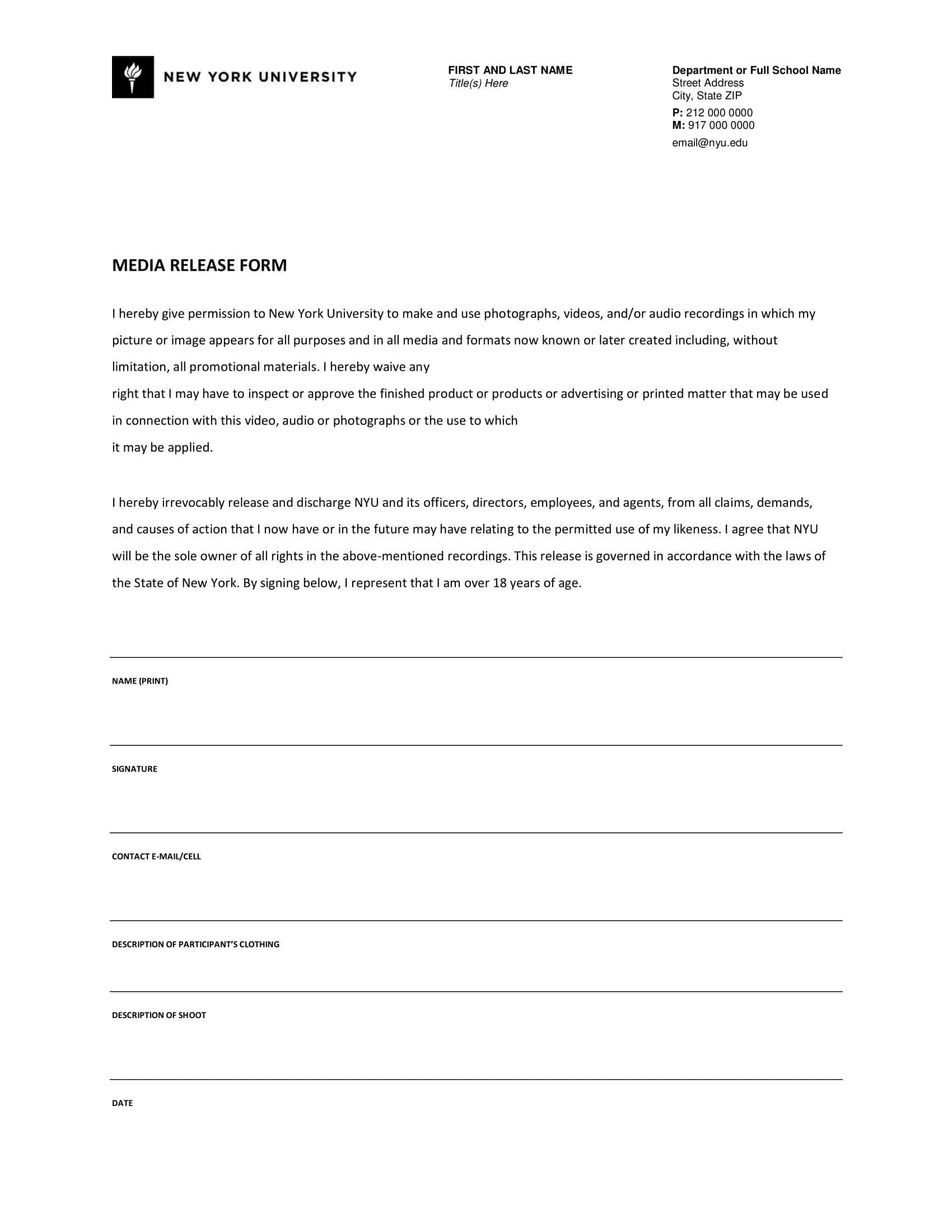


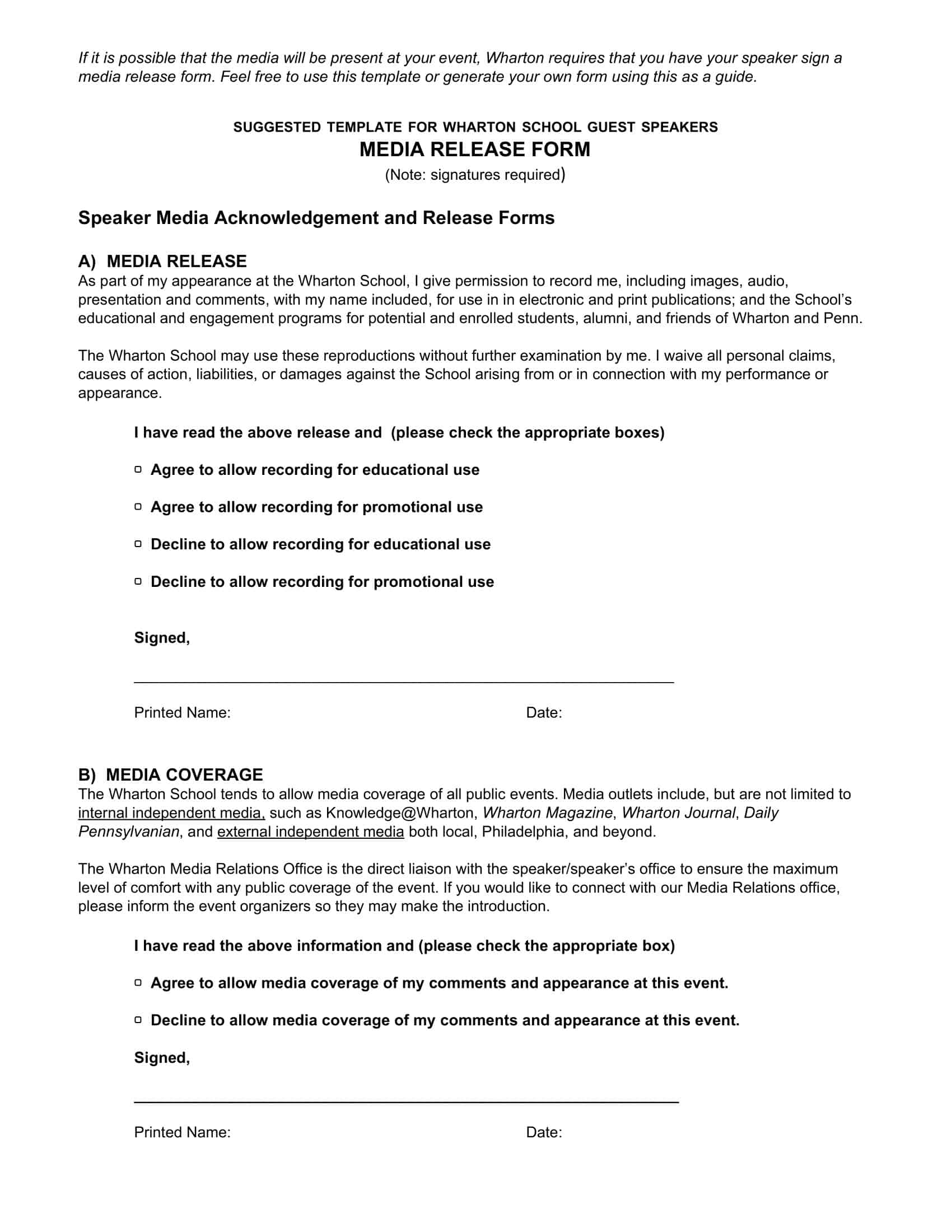





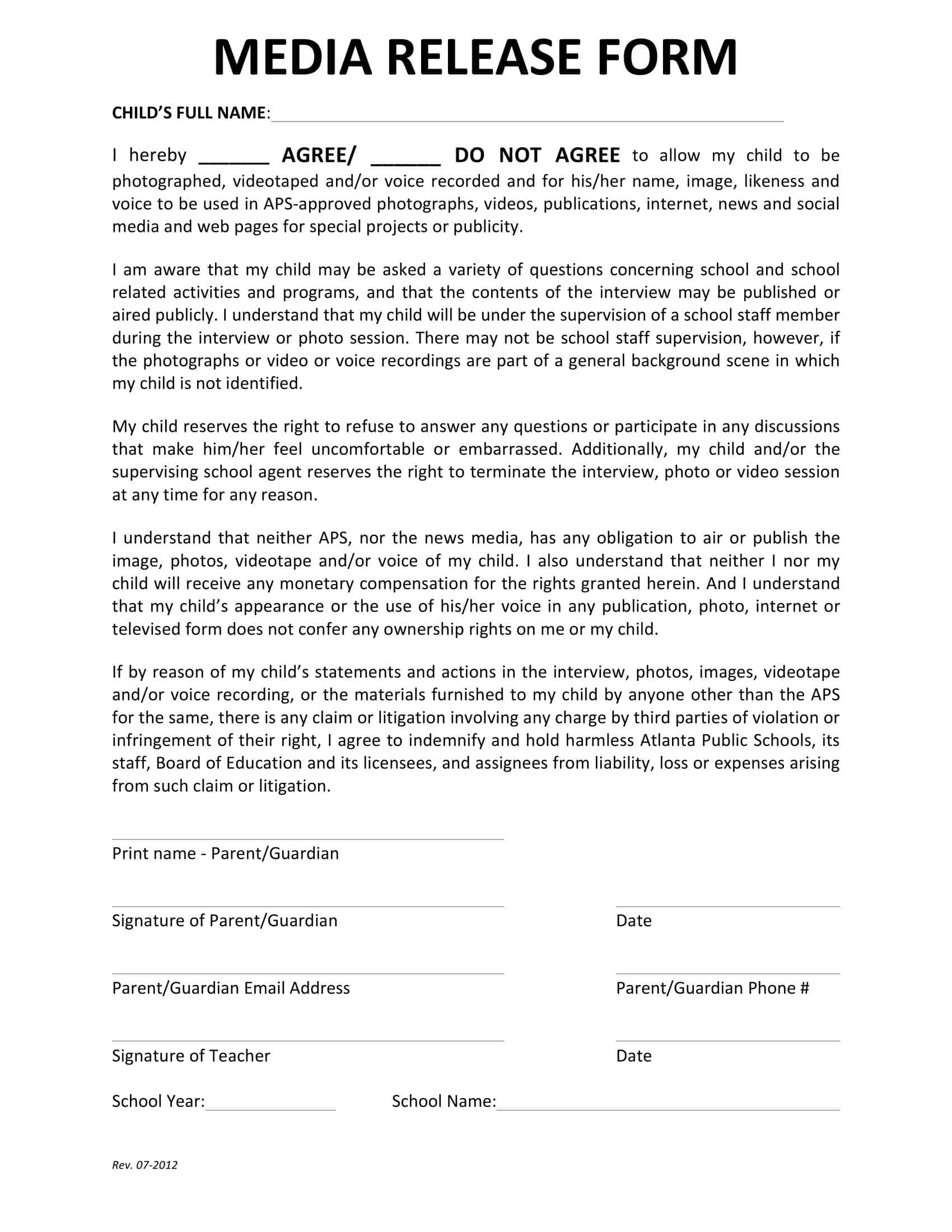











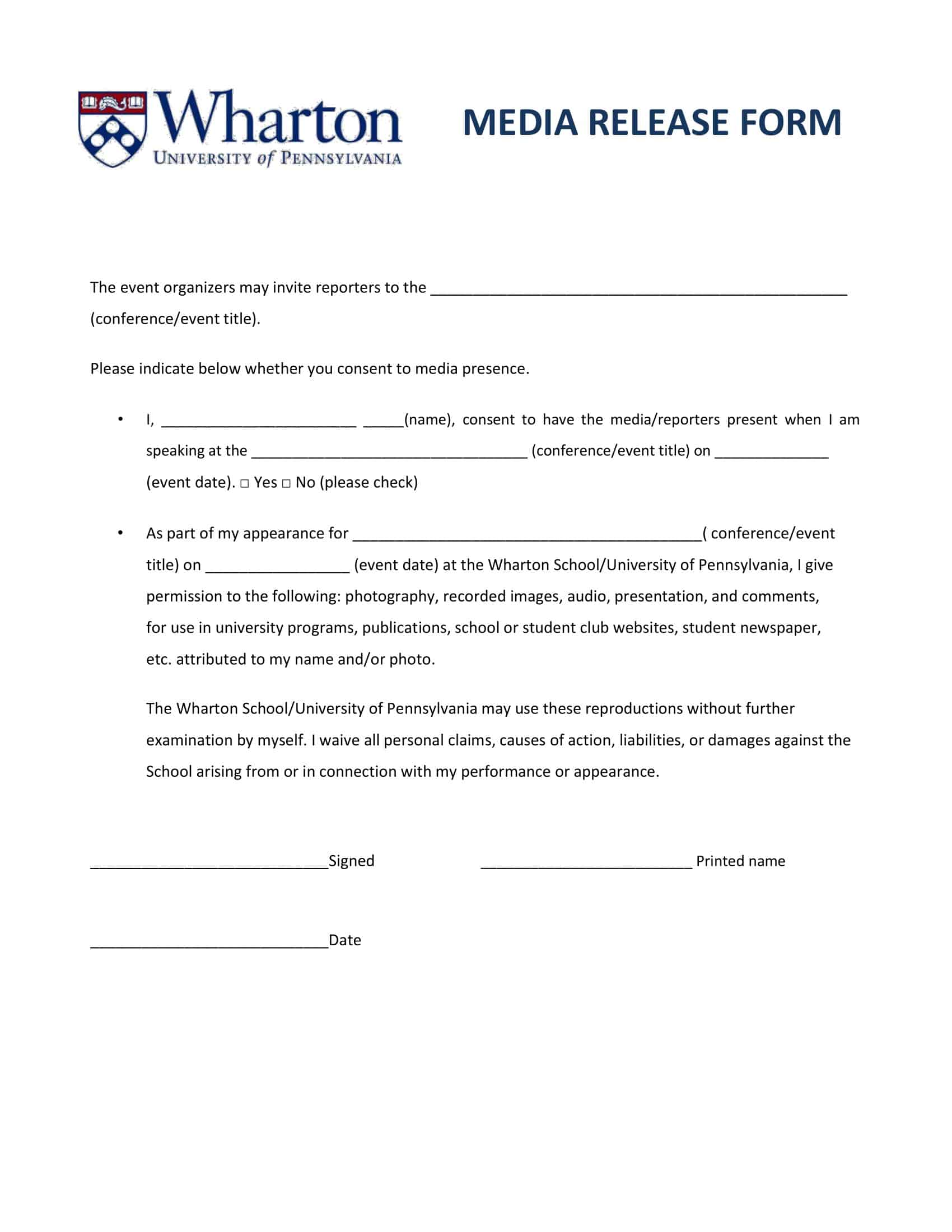


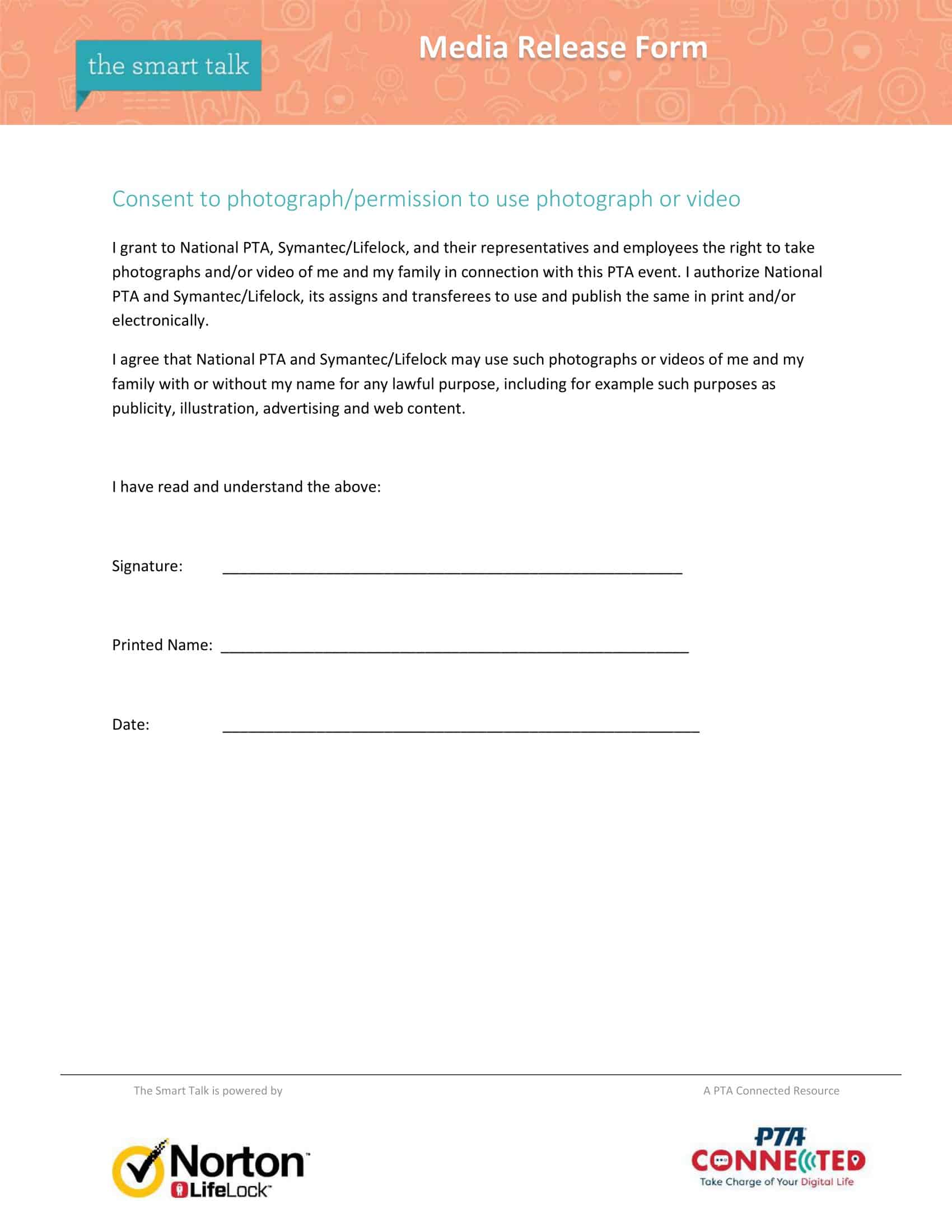


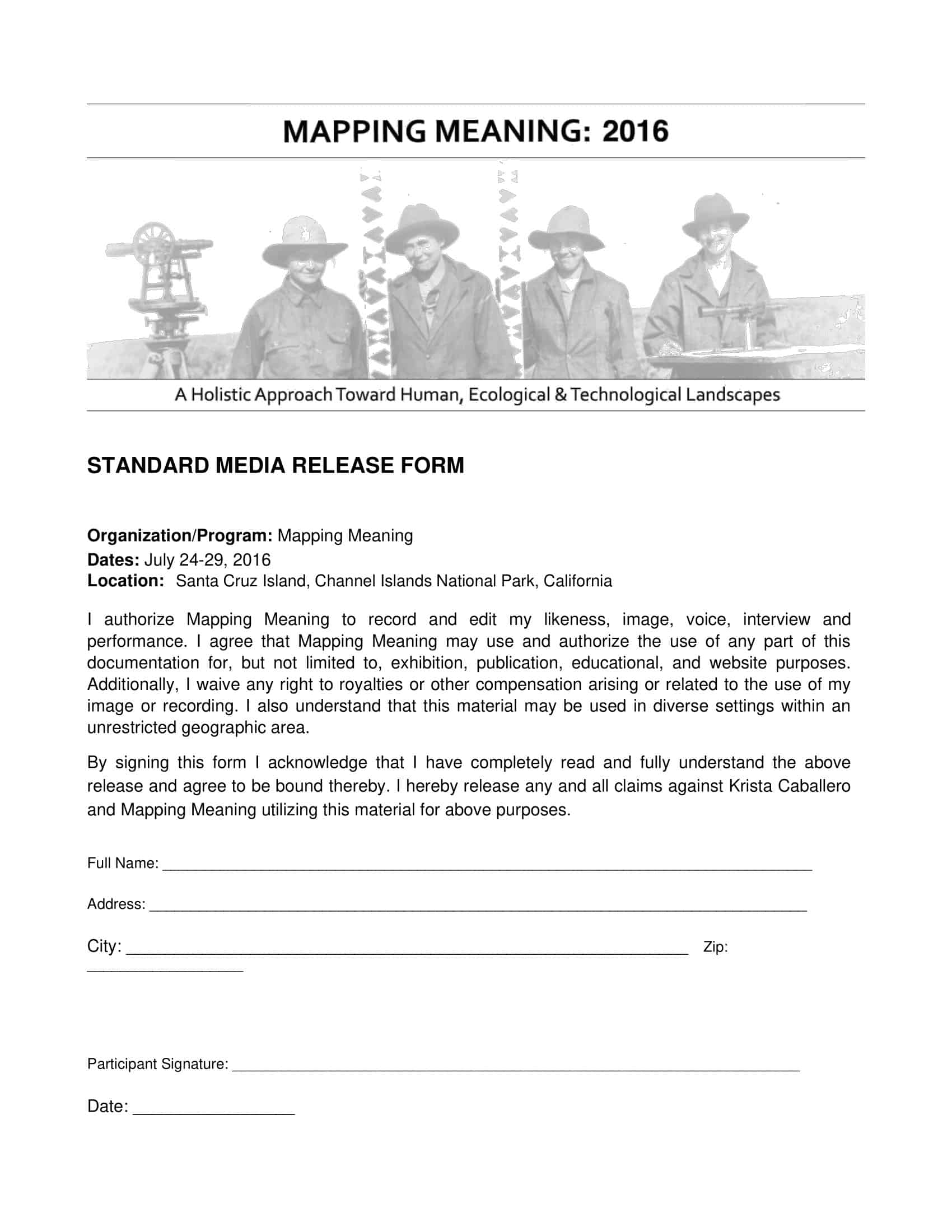















![%100 Free Hoodie Templates [Printable] +PDF 1 Hoodie Template](https://www.typecalendar.com/wp-content/uploads/2023/05/Hoodie-Template-1-150x150.jpg)
![Free Printable Food Diary Templates [Word, Excel, PDF] 2 Food Diary](https://www.typecalendar.com/wp-content/uploads/2023/05/Food-Diary-1-150x150.jpg 150w, https://www.typecalendar.com/wp-content/uploads/2023/05/Food-Diary-1-1200x1200.jpg 1200w)
![Free Printable Roommate Agreement Templates [Word, PDF] 3 Roommate Agreement](https://www.typecalendar.com/wp-content/uploads/2023/06/Roommate-Agreement-150x150.jpg)
